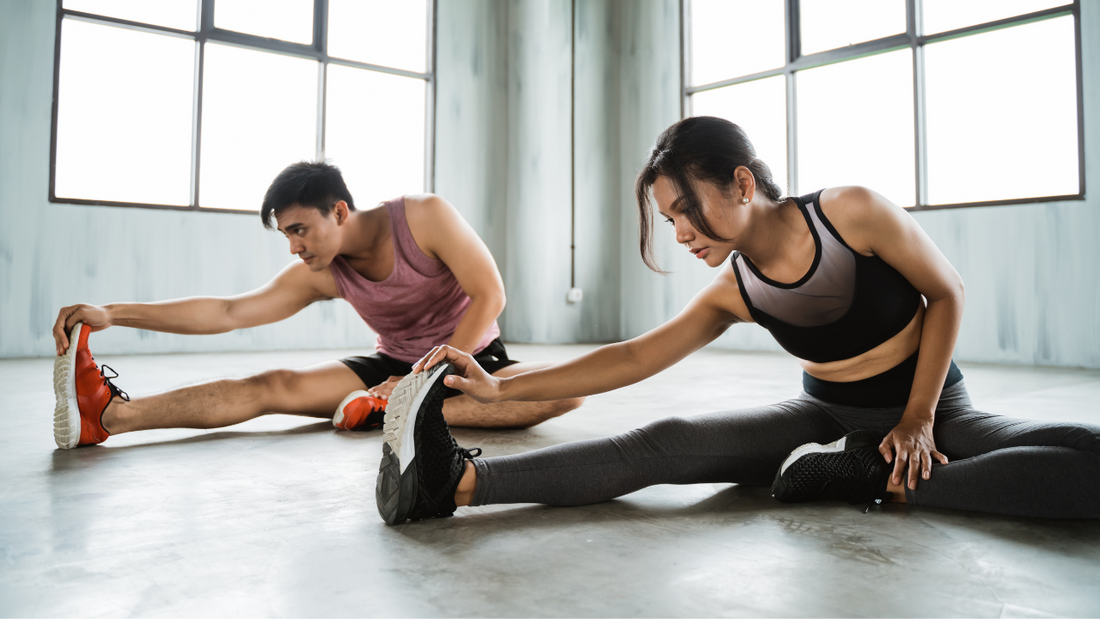Introduction
Welcome to Staver Health, where we believe in the power of optimal well-being through mindful practices. In this article, we will dive into the topic of stretching, shedding light on its numerous benefits, and emphasize the importance of finding a balance to avoid overstretching. Stretching is a vital component of any comprehensive fitness routine, supporting physical health, enhancing flexibility, preventing injuries, and promoting overall well-being.
What is Stretching?
Stretching refers to the deliberate act of elongating and lengthening the muscles and soft tissues of the body. This practice involves moving specific body parts into positions that target and extend the muscles beyond their usual resting length. Stretching can be categorized into two primary forms: static stretching and dynamic stretching.
Benefits of Stretching
Enhanced Flexibility
Regular stretching improves flexibility by increasing the range of motion in joints and muscles. This, in turn, enhances overall physical performance, making everyday activities and exercise routines more comfortable and efficient.
Improved Muscle Function
Stretching aids in the reduction of muscle tension and promotes improved muscle balance. This, in turn, can enhance coordination, posture, and muscle strength, reducing the risk of imbalances and subsequent injuries.

Injury Prevention
Regular stretching can help prevent muscle strains, joint sprains, and other common sports-related injuries. By increasing the elasticity and resilience of muscles and connective tissues, stretching enables the body to better withstand physical stress and sudden movements.
Enhanced Blood Circulation
Stretching stimulates blood flow to the muscles, increasing oxygen and nutrient delivery while removing waste products. Improved circulation not only facilitates muscle recovery but also contributes to overall cardiovascular health.
Stress Relief and Relaxation
Stretching exercises incorporate deep breathing and mindfulness, which help reduce stress and promote relaxation. This combination enhances mental well-being, reduces anxiety levels, and contributes to an improved sense of overall calmness.
Post-Workout Recovery
Engaging in stretching exercises post-workout promotes muscle recovery by reducing the buildup of lactic acid and minimizing post-exercise soreness. It aids in the removal of metabolic waste products and supports tissue repair and regeneration.
The Importance of Not Overstretching
While stretching offers numerous benefits, it is essential to avoid overstretching, as excessive stretching can lead to injuries and other complications. Overstretching occurs when the tissues are stretched beyond their healthy range of motion, causing muscle strains, ligament sprains, and joint instability. Here's why maintaining a balanced approach is crucial.
Increased Injury Risk
Overstretching can weaken the muscles and connective tissues, compromising their ability to support and stabilize the joints. This, in turn, increases the risk of acute injuries, such as muscle pulls, tears, and joint dislocations.
Joint Instability
Excessive stretching can lead to joint hypermobility, where the ligaments become lax, causing joint instability. This instability can contribute to chronic pain, reduced functionality, and an increased risk of joint-related conditions.

Reduced Performance
Overstretching can lead to a decrease in muscle strength and power output, negatively affecting athletic performance. The loss of stability and strength compromises movement efficiency and can hinder overall physical abilities.
Imbalances and Compensation
Overstretching specific muscles while neglecting others can create imbalances within the musculoskeletal system. These imbalances can lead to compensatory movements and muscle recruitment patterns, increasing the risk of injuries in other areas of the body.
Gradual Progression
To avoid overstretching, it is crucial to gradually increase the intensity, duration, and frequency of stretching exercises. Listen to your body, respect its limits, and allow adequate time for rest and recovery.
Conclusion
Stretching is a powerful tool for maintaining and improving physical health, flexibility, and overall well-being. Incorporating regular stretching exercises into your daily routine can enhance your athletic performance, reduce the risk of injuries, and contribute to stress relief and relaxation. However, it is crucial to strike a balance and avoid overstretching to prevent potential complications. Remember, at Staver Health, we advocate for mindful stretching practices that maximize the benefits while prioritizing your long-term health and safety.
Here are 10 stretches that target various muscle groups and provide significant benefits for the body
- Hamstring Stretch:
- Sit on the ground with one leg extended in front of you and the other bent with the sole of the foot against the inner thigh. Lean forward, reaching for your toes while keeping your back straight. This stretch targets the hamstrings and improves lower body flexibility.
- Quadriceps Stretch:
- Stand upright and bend one leg, bringing your foot towards your glutes. Hold your ankle and gently pull your foot closer to your buttocks. This stretch targets the quadriceps and helps improve leg strength and flexibility.
- Calf Stretch:
- Stand facing a wall or sturdy object. Step one foot forward and place your hands on the wall at shoulder height. Lean forward, keeping your back leg straight and your heel on the ground. This stretch targets the calf muscles and helps prevent tightness and injuries in the lower legs.
- Chest Stretch:
- Stand tall with your feet shoulder-width apart. Interlace your fingers behind your back and straighten your arms while squeezing your shoulder blades together. This stretch opens up the chest and shoulders, improving posture and relieving upper body tension.
- Triceps Stretch:
- Extend one arm overhead, bend it at the elbow, and reach your hand towards the opposite shoulder blade. Use your other hand to gently push the elbow back. This stretch targets the triceps and aids in upper body flexibility.
- Hip Flexor Stretch:
- Kneel on one knee with the other foot planted on the ground in front of you, creating a 90-degree angle with your leg. Lean forward, maintaining an upright posture, until you feel a gentle stretch in the front of your hip. This stretch helps alleviate tightness in the hip flexors and improves hip mobility.

- Spinal Twist:
- Lie on your back with your knees bent. Extend your arms out to the sides in a T position. Slowly lower both knees to one side, keeping your shoulders on the ground. Hold the stretch and then repeat on the other side. This stretch releases tension in the spine and improves spinal flexibility.
- Shoulder Stretch:
- Extend one arm across your chest and use your other arm to gently pull it closer to your body. Hold the stretch and then repeat with the other arm. This stretch targets the shoulders and upper back, relieving tension and promoting flexibility.
- Butterfly Stretch:
- Sit on the floor with the soles of your feet together, allowing your knees to drop towards the ground. Hold onto your feet and gently press your knees down. This stretch targets the inner thighs and groin muscles, improving hip flexibility.
- Neck Stretch:
- Sit or stand tall and gently tilt your head to one side, bringing your ear towards your shoulder. Hold the stretch and then repeat on the other side. You can also gently rotate your head from side to side and nod up and down to release neck tension.
Remember, it's essential to warm up before stretching and perform each stretch with control and within your comfortable range of motion. Incorporating these stretches into your routine can promote flexibility, reduce muscle imbalances, and enhance overall physical well-being.

